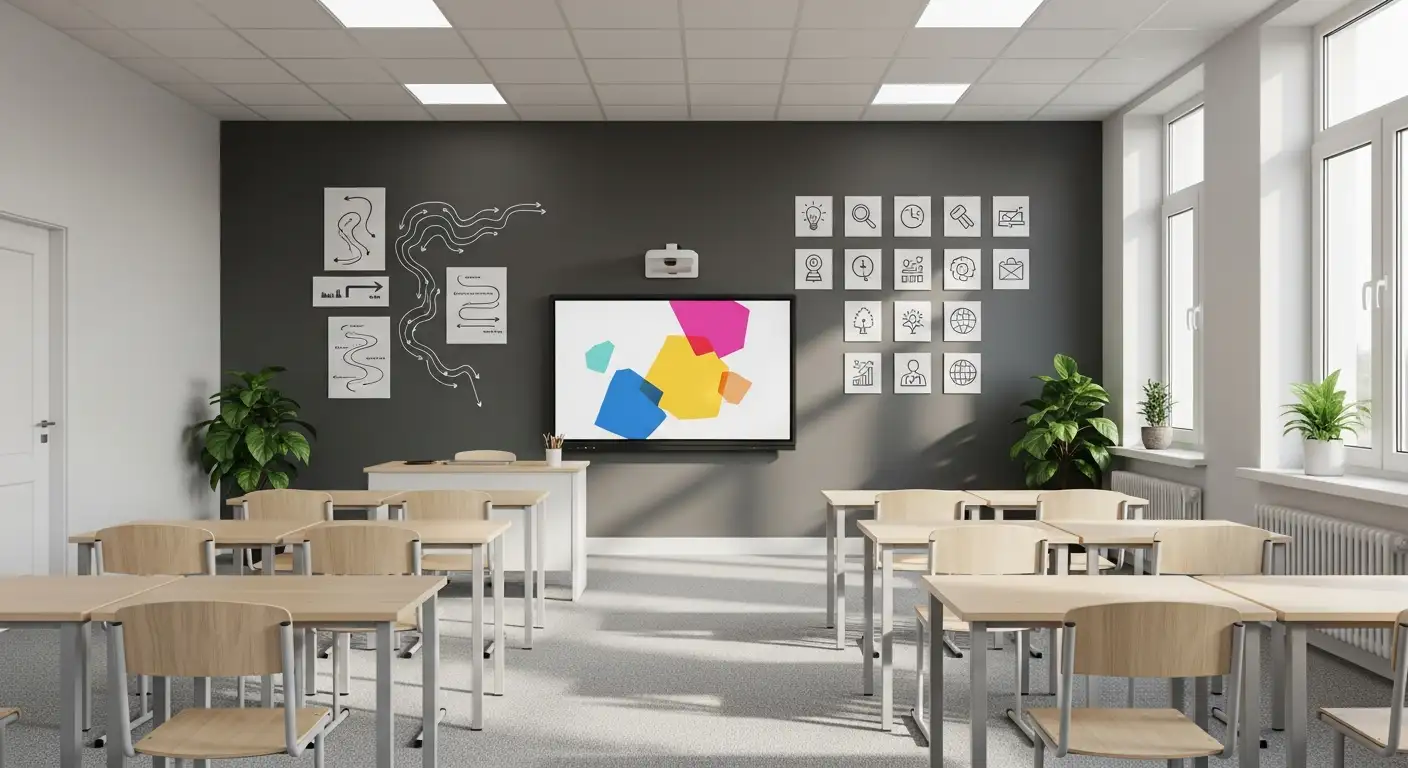Supporting Autism During Potty Training
Enhancing Independence: Tailored Approaches to Toilet Training for Children with Autism
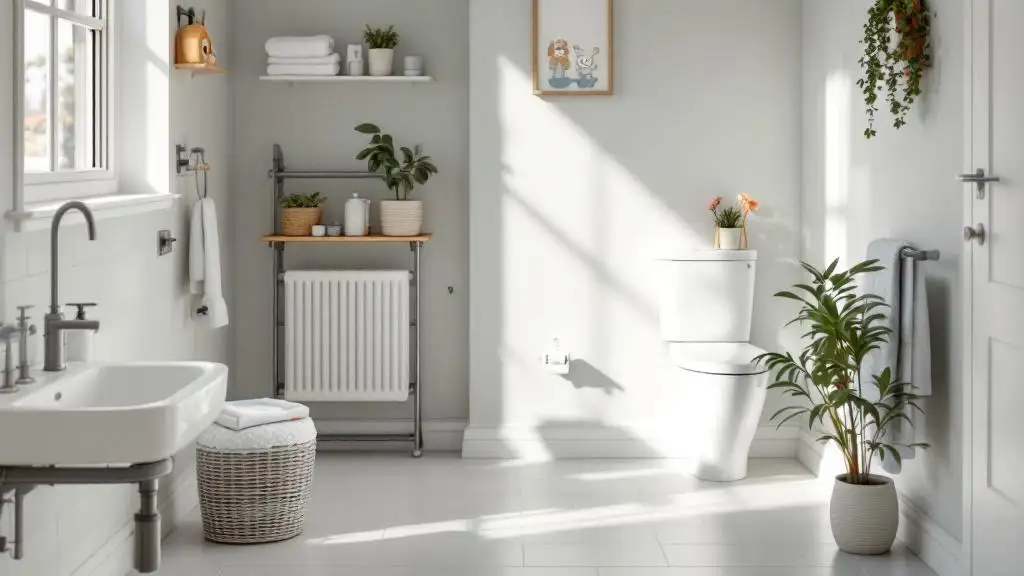
Understanding the Journey of Toilet Training for Children with Autism
Potty training is a pivotal milestone for young children, and for those with autism spectrum disorder (ASD), it can present unique challenges that require specialized strategies. This article explores how Applied Behavior Analysis (ABA) therapy and structured interventions can support children with autism during this crucial developmental phase. By examining evidence-based methods and practical school-based programs, we highlight effective approaches that promote independence and skill mastery for children with autism.
What is Applied Behavior Analysis (ABA) Therapy?
What is Applied Behavior Analysis (ABA) therapy?
Applied Behavior Analysis (ABA) therapy is a science-based, evidence-supported approach designed to improve specific skills and reduce problematic behaviors, especially in children with autism. It uses principles of behavior and learning theory to create structured, individualized interventions.
Science-based evidence supporting ABA
ABA therapy is backed by extensive scientific research and is recognized as an effective intervention by leading health organizations. Its success lies in its data-driven strategies and measurable outcomes, which ensure that progress is monitored and maintained.
Techniques used in ABA therapy
The therapy employs various techniques, including positive reinforcement, prompting, task analysis, and fading. Positive reinforcement involves rewards like praise or tangible items to encourage desired behaviors. Task analysis breaks down complex tasks—such as toilet training—into manageable steps, making learning more achievable. Prompting is used to guide the child through these steps and is gradually reduced to promote independence.
Role of trained professionals in ABA
Trained professionals, such as board-certified behavior analysts and therapists, develop and implement personalized ABA programs. They conduct thorough assessments to understand each child's abilities and challenges, ensuring that interventions are tailored to individual needs. Their expertise ensures that strategies are effectively applied and adjusted based on ongoing data and observations.
How ABA Therapy Supports Toilet Training in Children with Autism
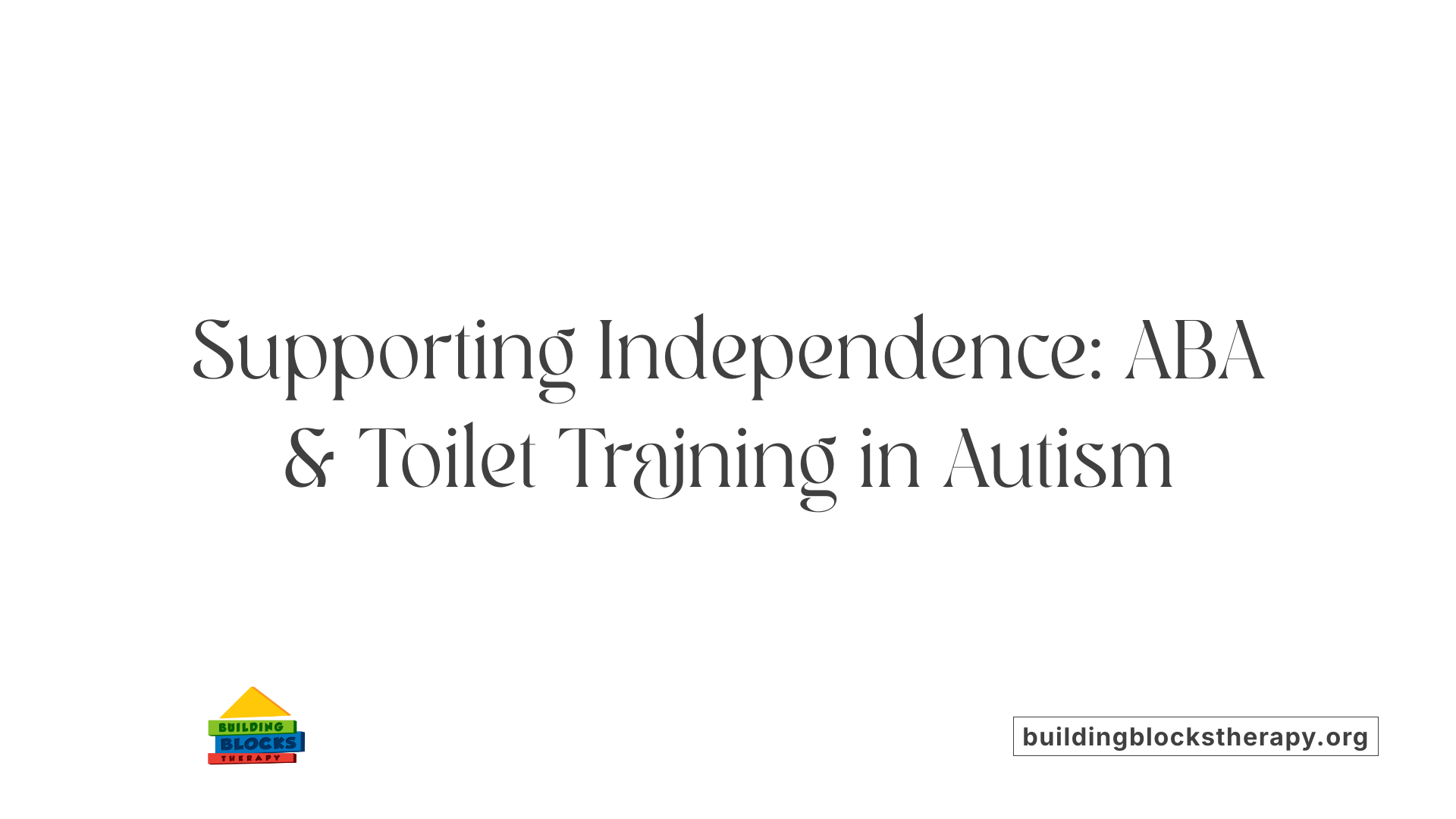
Benefits of ABA in toilet training
ABA therapy offers significant advantages for children with autism by focusing on the development of essential daily living skills, including toilet training. Its structured approach promotes independence and reduces reliance on diapers through consistent, evidence-based interventions tailored to each child's abilities. This comprehensive method helps children overcome typical challenges such as resistance, fear, and sensory sensitivities.
Use of evidence-based techniques
The therapy applies reinforcement strategies, such as praise and preferred rewards, to encourage successful toileting behavior. Techniques like task analysis break the toilet routine into manageable steps—recognizing the need to go, sitting on the toilet, and handwashing—to facilitate learning. Prompting methods, gradually faded over time, support skill acquisition while encouraging self-initiation. Data collection and monitoring allow for adjustments and ensure progress.
Customization for individual needs
ABA toilet training programs are personalized, using assessments to identify each child's starting point and preferences. For instance, some children respond better to edible rewards while others prefer toys. Fluid intake and bathroom visit schedules are adapted based on observed urination patterns, creating an individualized routine that optimizes success and comfort.
Skills development and independence
The approach builds essential toileting skills systematically, reinforcing mastery through immediate rewards following appropriate bathroom use. The ultimate goal is independence; children progress from assisted to self-initiated bathroom visits, with the program emphasizing generalization of skills across settings. Family involvement and collaboration with educators further support continuity and effectiveness.
By combining scientific principles and compassionate teaching, ABA therapy enables children with autism to achieve successful and lasting toilet training, fostering greater autonomy and improved quality of life.
Key Professionals Delivering ABA Therapy for Toilet Training
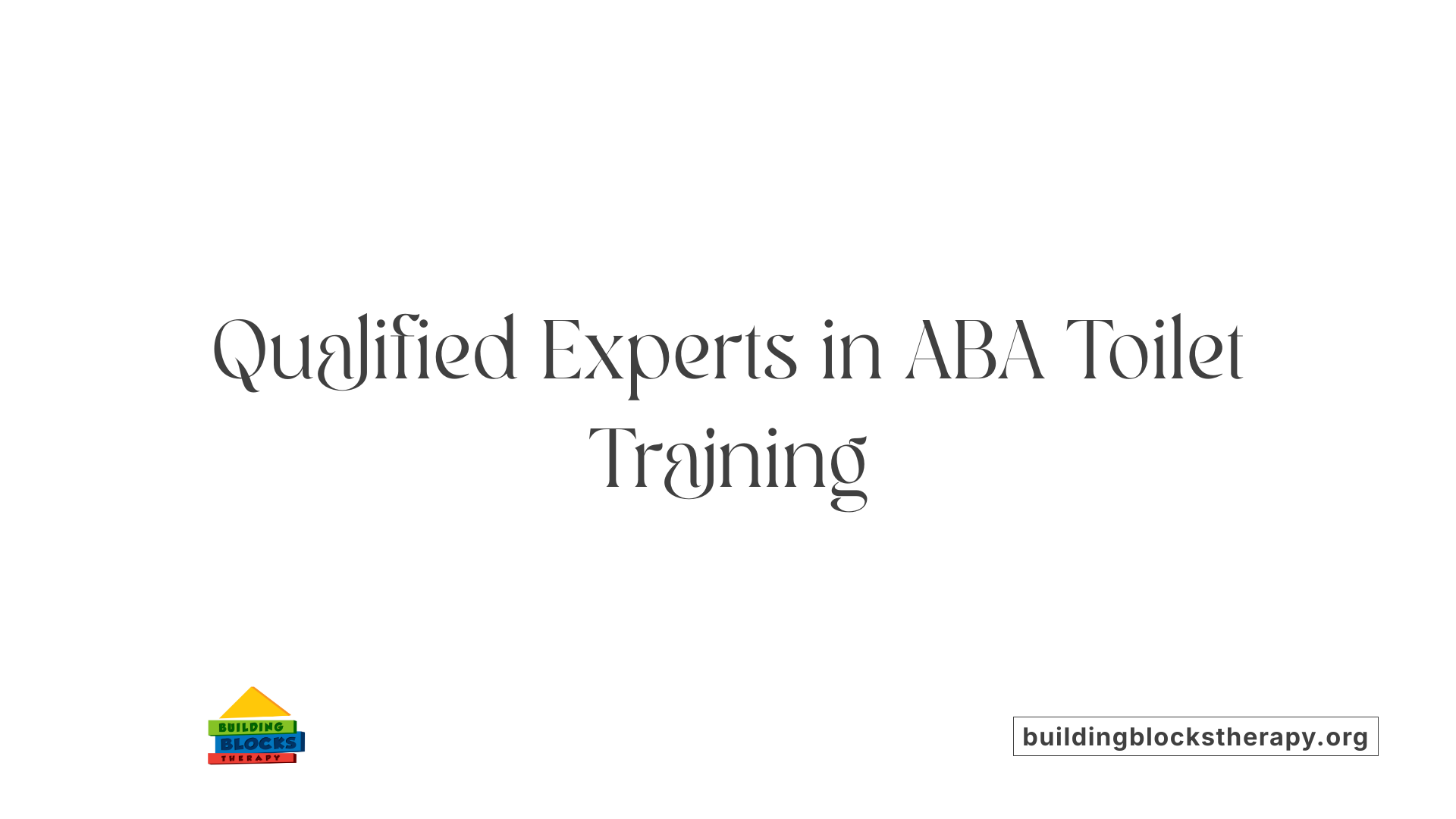
Who typically provides ABA therapy services?
ABA therapy services are typically delivered by trained professionals such as Board Certified Behavior Analysts (BCBAs), Registered Behavior Technicians (RBTs), and specialized behavioral therapists. These experts have specialized training in applied behavior analysis and work in diverse settings including specialized clinics, educational agencies, in-home programs, and community centers. Providers employ evidence-based methods like positive reinforcement and task analysis to assist children with autism or developmental delays in developing vital skills, including toilet training.
Qualifications and training
Professionals delivering ABA therapy undergo rigorous education and certification processes. BCBAs, for instance, complete graduate-level coursework, supervised practical experience, and a certification examination. RBTs receive focused training and competency assessments to implement behavior plans effectively under BCBA supervision. Continuous professional development ensures these therapists stay current with best practices in behavioral interventions.
Settings where ABA is delivered
ABA therapy is implemented across various environments tailored to the child's needs. Common settings include schools, specialized therapy clinics, homes, and community locations. School-based programs often utilize paraprofessionals trained with clinical support to maintain consistency and data collection, facilitating generalization of skills in naturalistic contexts. Home-based therapy promotes family involvement and allows practice in familiar routines.
Collaboration with families
Family participation is a cornerstone of ABA therapy success. Therapists work closely with parents and caregivers to establish consistent routines and reinforcement systems across settings. Training families in strategies such as prompting, schedule use, and managing accidents empowers them to support ongoing skill development. This partnership fosters generalization of toilet training and other life skills beyond the clinical or school environment.
Overall, effective ABA therapy for toilet training is delivered by qualified professionals collaborating with families in flexible settings to promote independence and skill mastery in children with autism or developmental delays.
Core Components of ABA Therapy Sessions in Toilet Training
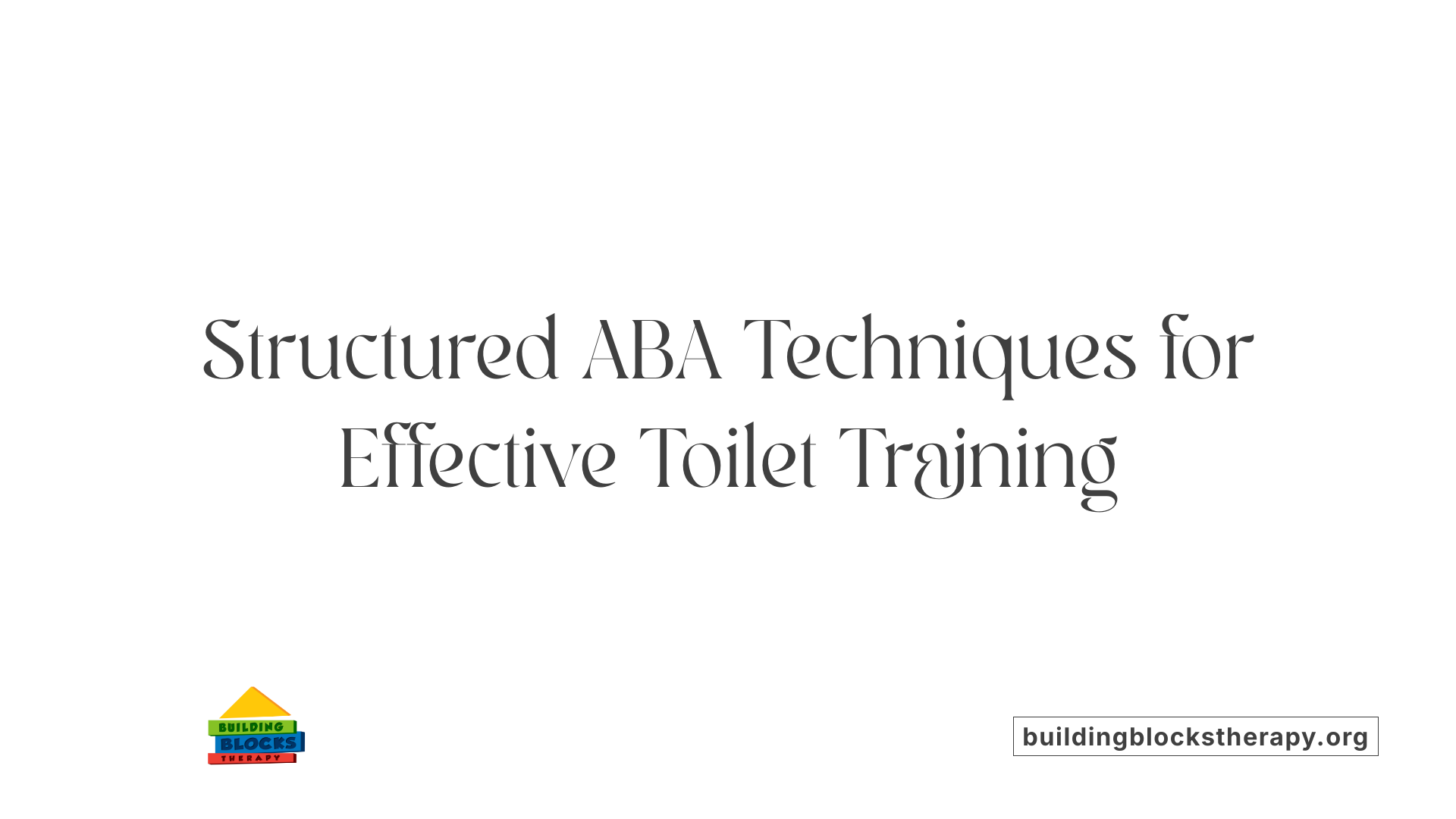
What are the key components of ABA therapy sessions?
ABA therapy for toilet training is a structured approach that begins with an assessment and skill analysis, where therapists evaluate the child's current abilities and behaviors related to toileting. This important step ensures an individualized and appropriate intervention plan.
Therapy sessions then focus on setting measurable and individualized goals tailored to the child’s needs. These goals might include steps such as recognizing the need to use the bathroom, sitting on the toilet, or washing hands afterward.
ABA employs diverse teaching methods like Discrete Trial Training (DTT) and Natural Environment Teaching (NET). DTT involves highly structured learning trials to teach specific skills, while NET encourages learning in natural settings.
Reinforcement plays a central role: therapists conduct preference assessments to identify motivating rewards—often edible treats or preferred toys—that are delivered immediately after successful toileting. Positive reinforcement encourages the repetition of desired behaviors and increases motivation.
A strong emphasis is placed on continuous data collection and analysis, with therapists tracking toileting success rates and behaviors. This data-driven approach allows ongoing program adjustment to maximize effectiveness.
Together, these components create a consistent routine that supports learning through breaking down complex toileting tasks into manageable steps, using prompts as needed, and systematically fading these prompts to foster independence. The structured environment coupled with supportive reinforcement helps children develop essential toileting skills efficiently and with minimal stress.
Measuring the Effectiveness of ABA Toilet Training Programs
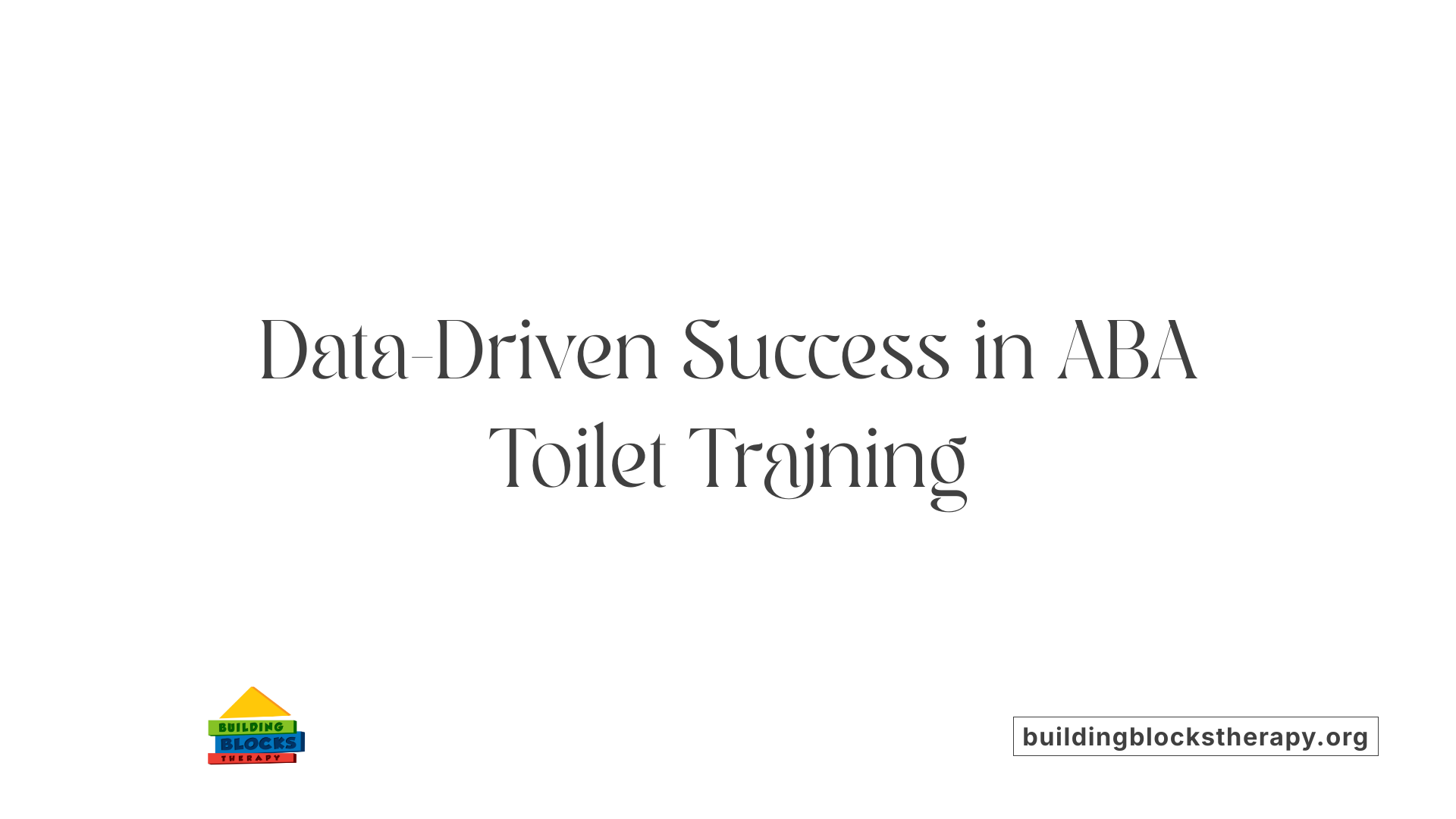
How is the effectiveness of ABA therapy measured?
Effectiveness in ABA toilet training programs is gauged through a data-driven and systematic approach focusing on observable behaviors related to toileting. Paraprofessionals and therapists collect detailed data on behaviors such as the percentage of correct urinations in the toilet, frequency of accidents, and timing of bathroom visits. These measurable behaviors serve as indicators of the child's progress over time.
Data-driven measurement
The collection of quantitative data allows for objective tracking of each child’s advancement toward mastery. For example, in school-based programs, data were gathered daily and plotted to visualize trends, enabling staff to adjust interventions and bathroom schedules accordingly. This approach supports individualized scheduling based on the child's unique urination patterns.
Tracking observable behaviors
Behaviors targeted for tracking include sitting on the toilet for a set amount of time, success in urination during scheduled visits, and gradual increases in intervals between bathroom breaks. Frequent observations and consistent recording ensure reliable monitoring of the child's response to intervention strategies.
Assessing progress with graphs and data
Graphical representations of collected data provide clear indicators of progress, showing improvements in toileting skills and the achievement of goals such as 100% correct toilet use. Such visual tools assist paraprofessionals and clinicians in making evidence-based decisions, reinforcing effective practices or modifying steps if necessary.
Use of research methods for validity
ABA programs employ rigorous research methods including operational definitions of behaviors, reliability measures such as Interobserver Agreement (IOA), and controlled intervention procedures. These practices ensure that measured improvements are directly attributable to the ABA intervention, enhancing the validity and credibility of the results.
Together, these measures illustrate how ABA’s scientific, structured approach enables educators and therapists to quantify behavior changes, provide tailored support, and ultimately promote independence for children with autism and developmental delays in toilet training.
School-Based Toilet Training Programs for Children with Autism
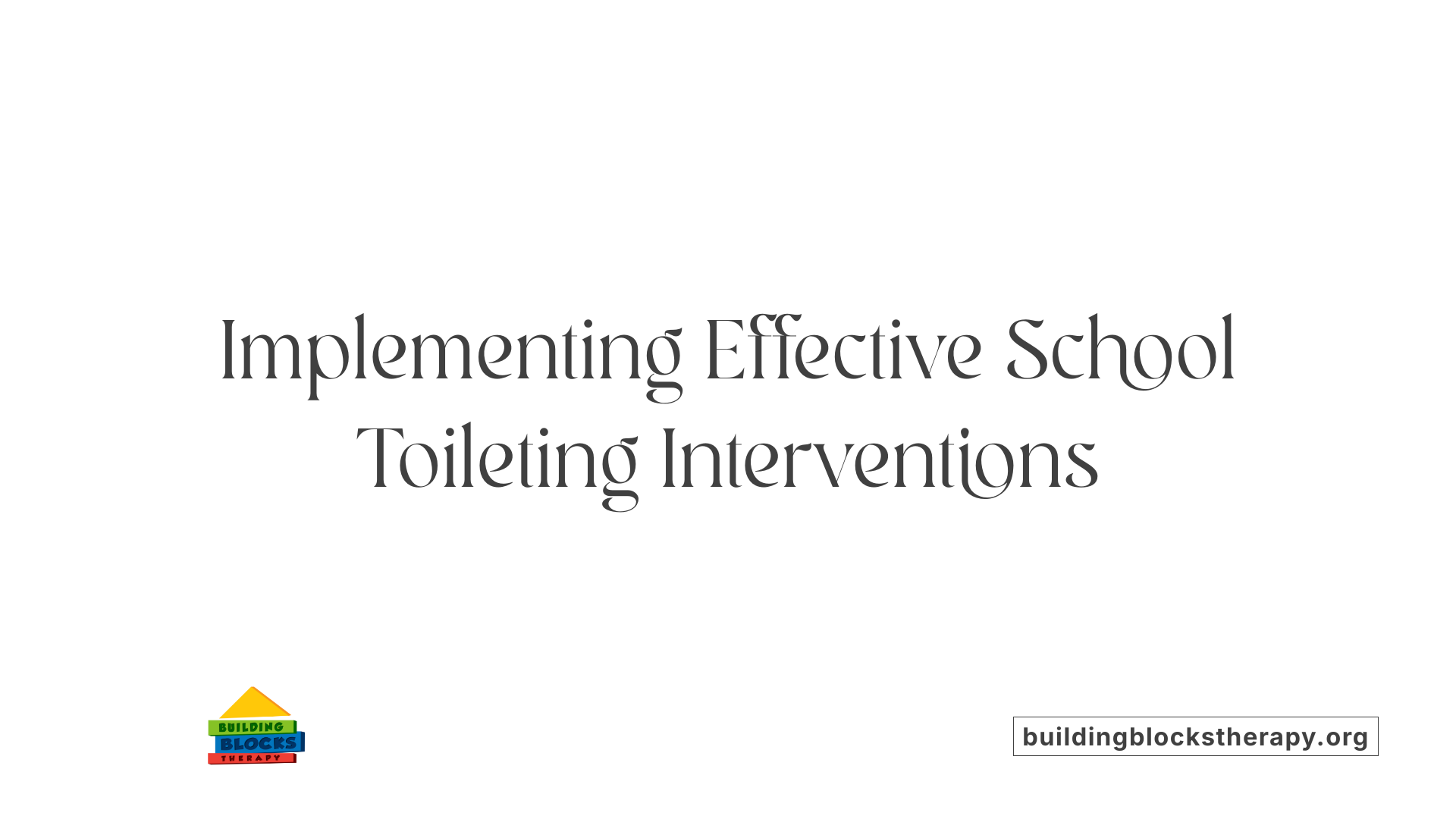
How was the school-based toilet training program structured and implemented?
The toilet training program was designed specifically for children with autism and developmental delays, administered primarily by paraprofessional staff in the school environment. The intervention began with the removal of diapers during school hours, encouraging children to wear regular underpants to promote independence. Fluid intake was carefully managed, initially around 8 ounces, to stimulate urination and adjusted based on each child's urinary output.
The program included scheduled bathroom visits, starting with frequent breaks that were gradually spaced further apart as children demonstrated mastery. Each bathroom visit involved a maximum sitting time of three minutes on the toilet, ensuring the child was comfortable but not discouraged by prolonged waits.
What role did paraprofessionals and clinical oversight play?
Paraprofessionals were the primary implementers of the program, which emphasizes its practicality in typical educational settings without reliance on extensive clinical staff. Clinical oversight was minimal but critical, involving initial training of paraprofessionals, ongoing observations, and providing feedback to ensure fidelity of implementation. Interobserver agreement, a measure to ensure consistent data collection, reached 100%, highlighting effective supervision and training.
What were the key features of the program?
Key elements of the program included:
- Removal of diapers during school hours
- Scheduled, individualized bathroom visits
- Limited toilet sitting time (up to 3 minutes)
- Immediate reinforcement following successful urination in the toilet
- Gradual increase in intervals between bathroom visits as proficiency improved
The program also relied on preference assessments to identify highly preferred rewards, predominantly edible, although one child preferred a handheld toy. These reinforcements were delivered immediately after correct toileting to encourage repetition of desired behavior.
How was reinforcement used and progress measured?
Positive reinforcement—such as praise and preferred toys or edible rewards—played a central role in motivating the children. Progress was monitored through systematic data collection, recording the percentage of correct urinations in the toilet. This data-driven approach allowed staff to adjust the intervention dynamically based on each child's progress.
This structured method resulted in all five participating children achieving 100% correct urination in the toilet within 32 to 88 school days, demonstrating the effectiveness of school-based interventions led by paraprofessionals with minimal clinical guidance.
Practical Techniques Within ABA-Based Toilet Training Interventions
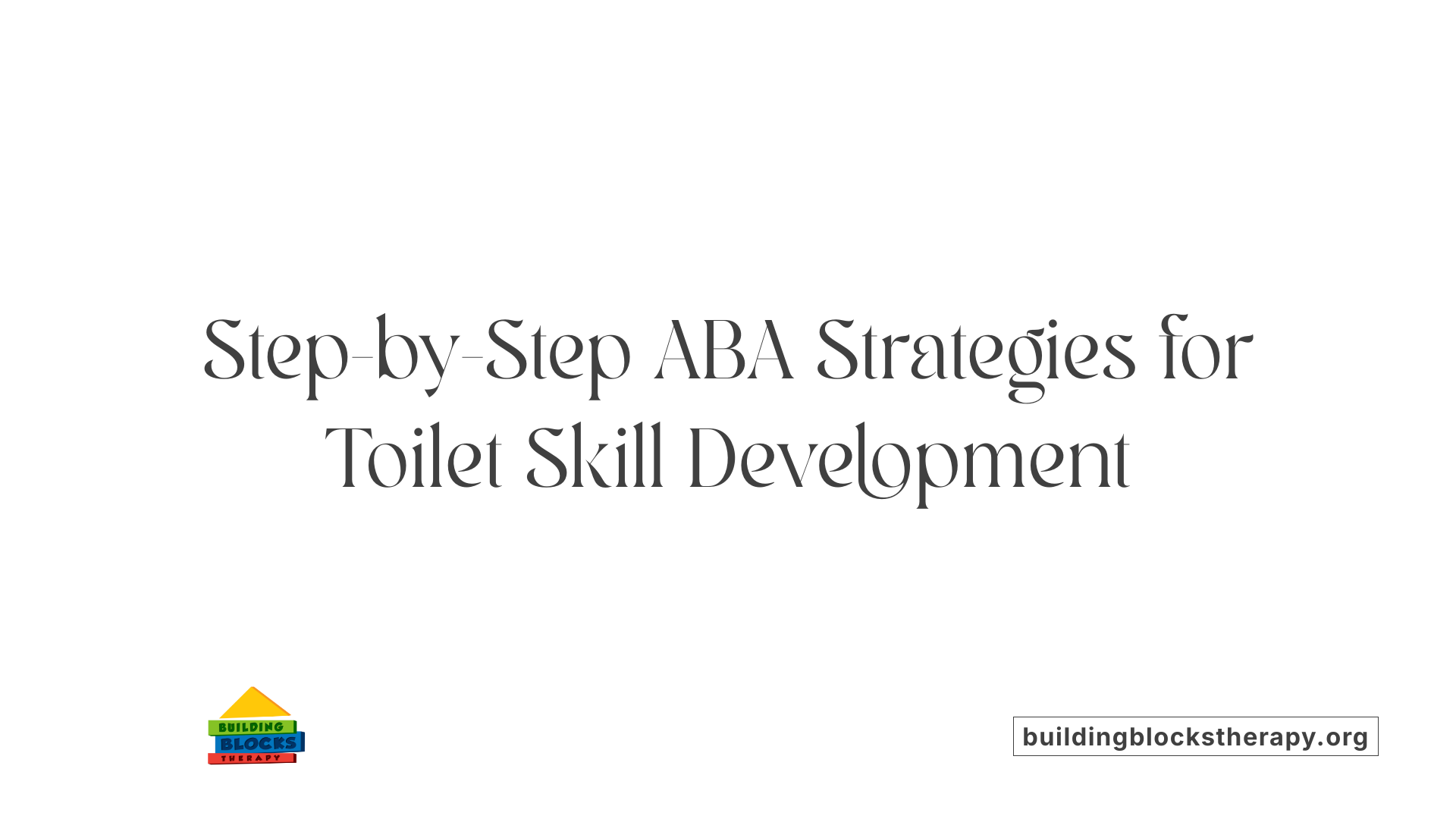
Diaper Removal and Transition to Underpants
One foundational step in ABA-based toilet training is the removal of diapers during school hours, which encourages children to adjust to regular underpants. This transition signals the shift from reliance on diapers to using the toilet, fostering a sense of independence. Wearing underpants also increases the child's awareness of wetness, which is critical for developing continence.
Fluid Intake Management to Encourage Urination
Managing fluid intake strategically supports timely urination during scheduled bathroom visits. Initial fluid consumption is monitored—typically starting around 8 ounces—with adjustments made based on the child's urinary output. This regulated intake promotes a predictable pattern, helping both caregivers and children anticipate bathroom needs.
Maximized Toilet Sitting Time Protocols
The intervention sets a maximum sitting time of three minutes on the toilet to avoid frustration and maintain the child's motivation. By limiting this duration, children are less likely to become upset or resistant, making the bathroom routine more manageable. If urination does not occur within this window, the child is gently redirected, maintaining a positive association with toileting.
Gradual Increase of Bathroom Intervals
Starting with frequent, scheduled bathroom visits, intervals between trips are gradually increased as children demonstrate mastery of urination in the toilet. This systematic approach relies on data collected about individual urination patterns, allowing personalized scheduling. Incrementally spacing bathroom visits fosters independence and helps the child develop internal cues for toileting.
Reinforcement Strategies and Motivation in Toilet Training
Preference Assessments to Identify Effective Rewards
To boost motivation during toilet training, preference assessments were conducted to determine each child's most favored items. These assessments were vital in customizing reinforcements that would be most effective for each individual child, helping to engage them more fully in the training process.
Use of Edible Items and Toys for Reinforcement
The primary motivators discovered were edible items, which were used as immediate rewards following successful urination in the toilet. One child was uniquely motivated by a handheld toy, illustrating the importance of personalized reinforcements. These reinforcers are critical in ABA-based interventions, as they directly encourage the repetition of desired behaviors.
Importance of Immediate Reinforcement
Immediate reinforcement right after a successful toilet visit was a core component of the program. This timing is crucial because it helps children associate the positive consequence closely with the desired behavior, strengthening the learning connection and encouraging them to continue trying.
Positive Reinforcement Fostering Continued Success
The use of positive reinforcement within the intervention created a supportive and encouraging environment. Rather than focusing on mistakes or failures, emphasis was placed on praising and rewarding progress, which not only fostered a positive learning experience but also helped maintain children’s motivation over time. This approach aligns with ABA principles that prioritize reinforcing desired behaviors to cultivate independence and skill mastery.
Addressing Challenges and Encouraging Skill Generalization
Overcoming fear, resistance, and sensory sensitivities
Children with autism often experience fear or resistance related to toilet training, sometimes due to sensory sensitivities such as discomfort with the toilet seat or flushing sounds. ABA therapy addresses these challenges through gradual exposure, desensitization techniques, and carefully tailored prompting. Encouragement without pressure allows the child to adapt at their own pace, promoting a more positive experience.
Calm management of accidents
Accidents are a natural part of the learning process in toilet training. ABA methods emphasize responding calmly to accidents, avoiding punishment, and reinforcing the child's efforts instead. This approach helps maintain the child's confidence and motivation, reinforcing the routine rather than creating negative associations with toileting.
Promoting generalization to home and other settings
Successful toilet training requires skills to transfer beyond the initial learning environment. The program highlighted the importance of extending toileting routines to the home and other settings by maintaining consistent schedules and reinforcement strategies. Collaboration between educators, paraprofessionals, and families fosters smoother generalization and sustainable independence.
Training for self-initiation of bathroom use
An essential step toward independence is teaching children to recognize and act on their need to use the bathroom without prompts. While the studied school program focused on scheduled visits, it identified the need for future training to encourage self-initiation. ABA techniques like task analysis and fading prompts can systematically develop this skill, supporting the child's progression toward autonomy.
Family Involvement and Consistency in Toilet Training Success
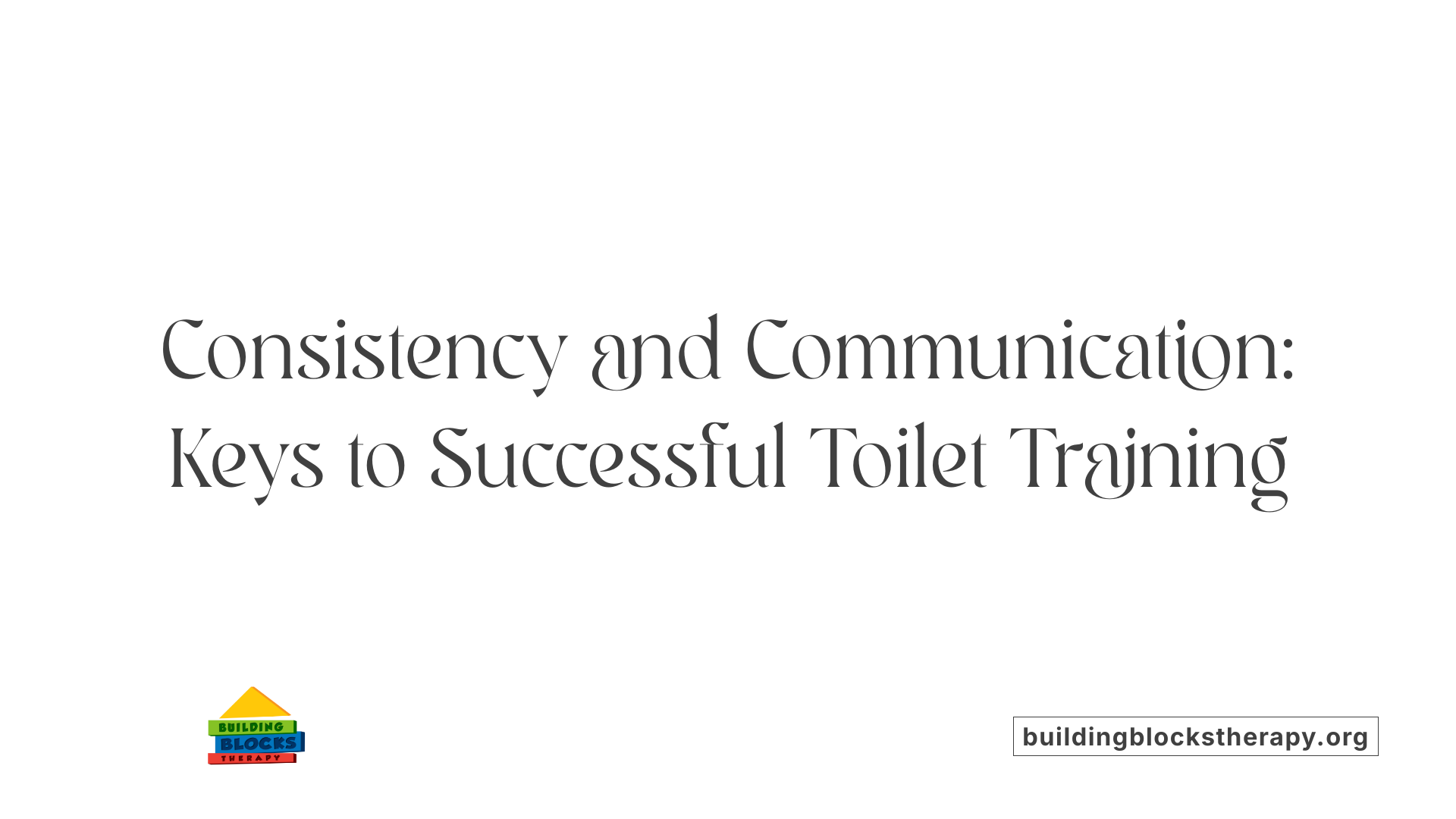
What is the role of families in reinforcing toilet training strategies?
Families play a crucial role in supporting and reinforcing toilet training for children with autism or developmental delays. Active family involvement helps ensure that the behavioral strategies used during therapy are consistently applied at home, creating a unified environment for learning. Parents and caregivers are encouraged to understand the techniques, such as positive reinforcement and structured routines, so they can continue to support their child's progress outside the educational setting.
Why are consistent routines important in toilet training?
Consistent routines provide predictability and security, which are especially beneficial for children with developmental challenges. Establishing regular bathroom breaks and scheduled times for toilet visits helps children learn to anticipate and manage their needs effectively. ABA-based programs emphasize maintaining a stable routine that includes clear visual supports and step-by-step task analyses, which assist children in mastering the series of actions involved in toileting.
How does communication between caregivers and therapists contribute to success?
Clear and ongoing communication between families and therapists ensures that everyone involved is informed about the child's progress, challenges, and adjustments needed in the training program. This collaboration promotes consistency in implementing strategies, reinforces positive behaviors, and allows for timely problem-solving. It also helps align goals and expectations, making the transition between different environments smoother for the child.
What strategies support skill maintenance beyond therapy sessions?
To promote independent toileting skills in various contexts, families are encouraged to implement learned techniques consistently at home and in community settings. Reinforcement schedules and prompts used in therapy should gradually be faded as the child gains mastery. Generalization strategies ensure that the child can apply toileting skills beyond the structured sessions, maintaining independence across different environments. Training also often includes addressing self-initiation of toilet use to foster autonomy.
Together, family involvement, consistent routines, and strong communication with therapists form the foundation for effective and sustainable toilet training outcomes in children with autism or developmental delays.
Promoting Independence Through Structured Support
Effective potty training for children with autism hinges on tailored, evidence-based approaches that blend specialized therapy and supportive environments. Applied Behavior Analysis therapy provides a scientific framework that has demonstrated robust success in fostering toileting skills through individualized assessment, consistent reinforcement, and careful data monitoring. When combined with practical school-based programs delivered by trained paraprofessionals and bolstered by active family participation, children with autism can achieve meaningful independence in toileting. Recognizing the unique challenges these children face allows caregivers, therapists, and educators to collaboratively create nurturing strategies that promote skill mastery, generalization, and lasting success. With patience, understanding, and structured support, potty training is a reachable goal that significantly enhances quality of life and autonomy.
References
- Toilet Training Children With Autism and Developmental ...
- ABA Therapy Tips for Successful Toilet Training
- Potty Training for Children with Autism using ABA Therapy
- Applied Behavior Analysis (ABA)
- The Top 10 Reasons Children With Autism Deserve ABA
- Applied Behavior Analysis (ABA)
- 6 Benefits of ABA Therapy for Children with Autism



